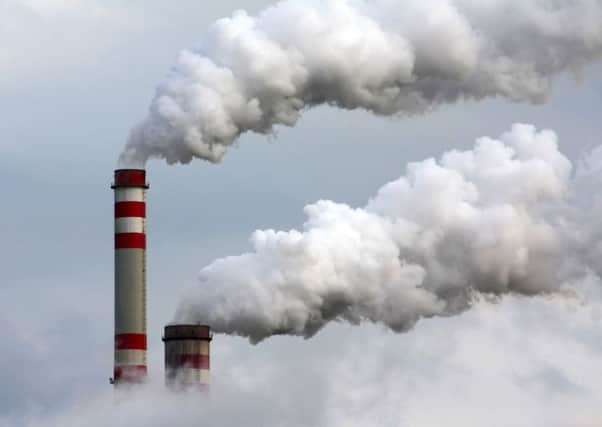Ilona Amos: More needs done to fight climate change


According to the latest figures from the World Meteorological Organization, a specialised agency of the United Nations, temperatures up to September have been 0.88C above the average seen between 1961 and 1990. And it is predicted to stay warm enough for the remainder of the year to surpass the 2015 average of 0.76C.
The WMO report shows 2011 to 2015 has been the hottest five-year period on record, and that 16 of the 17 hottest years on record have been this century – the other was in 1998.
Advertisement
Hide AdAdvertisement
Hide AdSceptics don’t need to look very far if they want further proof that climate change is a thing and that it’s happening now. This rocketing heat has been accompanied by increasingly extreme weather, rising sea levels and shrinking sea-ice and glaciers.
All these factors confirm the long-term warming trend caused by human-driven emissions of greenhouse gases. Data shows the level of carbon dioxide in the atmosphere passed the significant milestone of 400 parts per million for the first time in 2015, and it continues to rise.
International leaders and environmental experts are currently involved in the latest round of climate talks, which are taking place in Morocco. Negotiations will centre on the challenge of achieving the ambitions set out in the newly adopted Paris Agreement, which has seen more than 100 countries signing up to restrict temperature rise to less than 2C above the pre-industrial level while taking steps to achieve an upper limit of 1.5C .
Scotland has been making steady progress towards its tough climate targets, reaching its 2020 goal six years early. Figures show greenhouse gas emissions fell by 45.8 per cent between 1990 and 2014, exceeding the 42 per cent cut required. Ministers have announced plans to raise the bar further by bringing in an even more testing emissions reduction target for 2020.
Unfortunately, though, it’s pretty clear that much more needs to be done – both in Scotland and across the rest of the world.
Perhaps we can take heart from the latest Global Carbon Budget report, which shows worldwide emissions from burning fossil fuels did not increase in 2015 and are projected to rise by just a small amount this year– marking three years in a row of almost zero growth. And this is despite growth in the global economy, which is traditionally linked with rising emissions.
Declining coal use in China, the planet’s biggest carbon dioxide emitter, is thought to be the key reason for the slowdown. The United States, the second worst offender, also reduced coal use and saw emissions decrease in 2015. Emissions from the EU and India increased.
This flattening out ties in with pledges by countries to decrease emissions until 2030, but falls short of cuts needed to restrict the temperature rise well below the crucial 2C that experts say will spark catastrophic and irreversible climate change. Existing pledges under the Paris agreement put the planet on track for around 3C of warming, and that’s without even if Donald Trump does not undo his predecessor’s efforts.
Scientists say emissions reductions are not enough – we need them to drop to near zero.